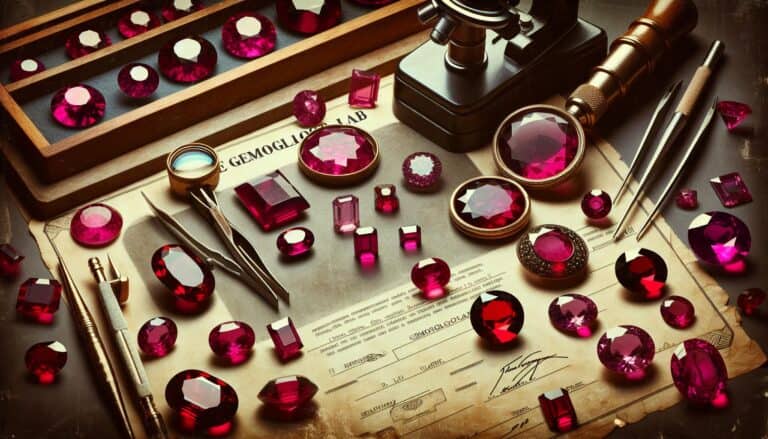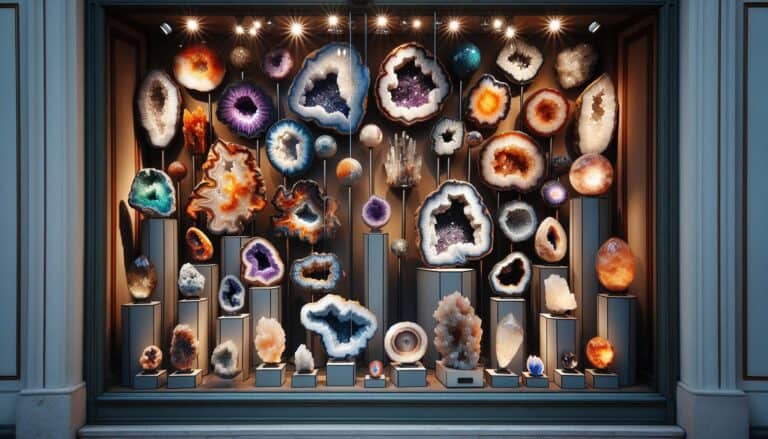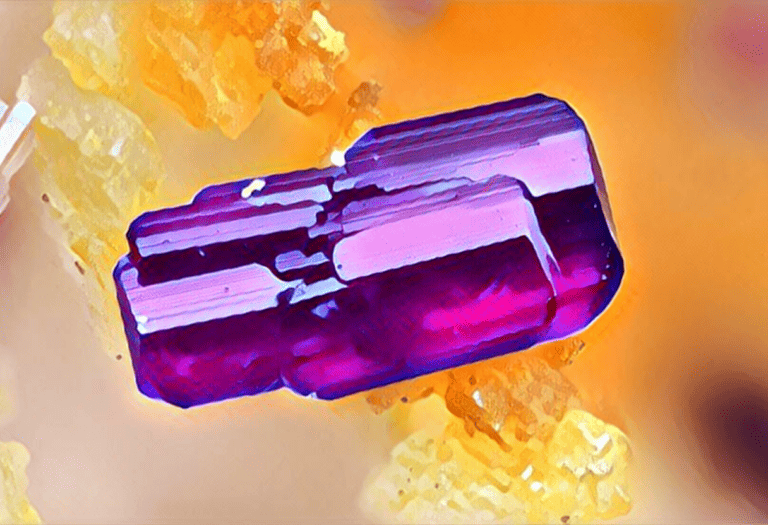Ever wondered about the value of that intriguing mineral called dolomite?
You’re not alone. Dolomite’s worth can be quite a puzzle, wrapped in its multifaceted uses and its role in various industries. Whether you’re a collector, a home remodeler, or just curious, understanding dolomite’s value is key.
The price of dolomite varies based on factors like purity, size, and whether it’s been processed for specific uses. From construction to agriculture, dolomite’s versatility makes it a sought-after commodity. But don’t let its practical applications fool you—dolomite can also be a collector’s gem, literally and figuratively.
Stay tuned as we dive into the nitty-gritty of dolomite’s market value, what drives its price, and how you can determine how much your dolomite is worth.
You’ll be equipped with the knowledge to navigate the dolomite market like a pro.
Dolomite’s value depends on purity, size, usage, and color. High-quality, rare specimens are more valuable. Assess value by considering grading, market trends, and authenticity. Prices fluctuate with demand.
What Is Dolomite?
You may have heard of dolomite as a mineral or as a rock, but sometimes the distinction between the two isn’t quite clear. Dolomite the mineral is composed of calcium magnesium carbonate, a double carbonate with a structural arrangement that sets it apart from other carbonates. It’s often found forming pink, white, gray, or tan crystals. Dolomite the rock, also known as dolostone, is predominantly made up of dolomite mineral and is frequently used in construction.
The demand for dolomite is directly linked to its versatility. In its powdered form, dolomite has a neutralizing effect on acidic soil, which explains its popularity in agriculture. Conversely, when it’s fired in a kiln and combined with glass ingredients, it becomes a stabilizing agent which is invaluable in the production of ceramics and glass – lending to the material’s durability and resilience.
This multifaceted mineral is also essential in the construction industry. Dolomite is a popular choice for:
- Countertops
- Tiles
- Aggregate in concrete
Not only does it add an aesthetic appeal with its varying hues, but it also strengthens the concrete it’s mixed with. The durability of dolomite makes it perfect for use in environments exposed to weather and heavy traffic.
In environments where the pH levels of surface water need to be maintained or altered, dolomite chips serve as excellent water treatment agents. They adjust pH levels efficiently, thereby preventing pipe corrosion and enhancing the quality of drinking water.
Within the realm of collectables, dolomite specimens, especially those with well-formed crystals and unusual coloration, are treasured by mineral collectors. The value of these collectable pieces may be subjective and varies based on size, condition, and the presence of other minerals that could add to its allure.
While assessing dolomite’s worth, remember that its value extends beyond just monetary measures. Its contribution to the environment, as well as industrial and aesthetic applications, demonstrates the true worth of this versatile material.
Dolomite Prices: Factors That Affect Value

When you’re looking to purchase dolomite, whether it’s for a project or collection, you’ll find that prices can vary significantly. This variation is due to a number of factors that influence dolomite’s intrinsic worth. Understanding these variables will enable you to better assess the price you’re quoted and determine if it’s a fair deal.
Color, Clarity, and Cut Quality
The visual appearance of dolomite can have a profound impact on its value. Key attributes include:
- Color: Pure dolomite is typically white, but impurities can imbue it with hues like pink, gray, or black. Certain colors, especially those that are rare or particularly vivid, may increase the price.
- Clarity: Like many other minerals, the fewer impurities or inclusions within dolomite, the higher its clarity. Transparent and translucent specimens often fetch higher prices than those that are opaque.
- Cut Quality: For dolomite that’s been cut into slabs for construction or ornamental purposes, the precision and finesse of the cut boost its aesthetic appeal and hence its market value.
The combination of these characteristics influences not only dolomite’s visual appeal but its suitability for specific uses, ranging from jewelry to functional building materials.
Market Demand and Availability
The laws of supply and demand also play a pivotal role in determining dolomite’s price.
- High Demand: With increasing interest in natural stone products for home interiors, dolomite slabs used for countertops or tiles are witnessing heightened demand.
- Limited Availability: Dolomite’s worth can surge when there are limited deposits of high-quality material or when mining restrictions are in place.
Here’s a brief look at the global supply dynamics:
| Country | Production (Metric Tons) | Known Reserves (Metric Tons) |
|---|---|---|
| China | High | Substantial |
| United States | Moderate | Ample |
| Italy | Low | Moderate |
These figures suggest that while some regions have abundant reserves, the actual availability in the market can fluctuate, affecting prices regionally and globally. Logistics, such as transportation costs and export-import duties, can further influence the final cost you pay for dolomite. Keep an eye on industry reports and pricing indexes to stay updated with the latest market trends.
Understanding Dolomite: A Rare Gem

The Rarity of Dolomite
You might wonder what sets dolomite apart in the world of minerals and rocks. Its rarity is not a myth. Dolomite stands out because it’s not commonly found in a gem-quality state that makes it suitable for fine jewelry or ornate decorative pieces. This scarcity is compounded by the fact that only specific geographical regions have the perfect conditions for forming dolomite with such purity and aesthetics.
High-quality dolomite is a treasure for collectors and designers alike due to its unique crystal structure and inherent beauty. But don’t mistake its uniqueness for unavailability. Despite its rarity, there’s a steady, if niche, market for dolomite that caters to enthusiasts and professionals who know exactly what they’re looking for.
The value of dolomite can fluctuate based on its scarcity, and as with many gems, the fewer there are on the market, the higher the price can climb. This cyclical interplay between availability and demand keeps the dolomite market lively, ensuring that those in possession of this mineral treasure hold something truly special.
Origins and Characteristics
Delving into the origins of dolomite, you’ll discover that this mineral is primarily a sedimentary carbonate rock, closely related to limestone. Dolomite forms in a unique way, and this formation process affects its availability. It requires specific conditions — typically the alteration of limestone via magnesium-rich groundwater. This process culminates in dolomite’s signature crystalline structure, known as the dolostone rock.
Each dolomite sample boasts a unique blend of traits that contribute to its value:
- Color: Ranges from white to gray, or pink to green hues.
- Clarity: Often comes with a translucent to opaque clarity.
- Luster: Exhibits a pearly to vitreous luster depending on the cut and finish.
- Hardness: On the Mohs scale, dolomite scores around 3.5 to 4, which is relatively soft, making it more challenging to use in certain applications.
This enticing array of qualities means that dolomite can display significant variations even within a single specimen. Such variability partners with rarity to affect the overall worth of the mineral in the marketplace. Armed with this knowledge about the origins and characteristics of dolomite, you’re better equipped to understand its value and the fascination it holds for collectors and connoisseurs worldwide.
Dolomite Grading and Valuation
When you’re looking into the value of dolomite, understanding its grading system is essential. Much like diamonds which are assessed based on the 4 Cs (cut, color, clarity, and carat), dolomite also undergoes a similar grading process. This grading determines the overall quality and worth of the stone.
The Grading System for Dolomite
Grading dolomite involves assessing several key aspects:
- Color: Ranges from colorless to shades of white, gray, or pink. The more vivid and uniform the color, the higher the grade.
- Clarity: Evaluates the presence of inclusions or blemishes. Clear stones with few to no inclusions are graded higher.
- Luster: Observes the quality of light reflected from the stone’s surface. A brilliant luster increases the dolomite’s value.
- Hardness: Measured on the Mohs scale, where dolomite typically ranks at 3.5 to 4. The harder the stone, the more durable and valuable it is.
These factors contribute cumulatively to the dolomite’s grade, which directly impacts its market price.
Certification and Appraisal
Obtaining a professional certification and appraisal for dolomite is critical if you’re looking to sell or insure the stone. A certificate from a recognized gemological laboratory provides a credible record of the dolomite’s attributes and authenticity. Appraisals, on the other hand, determine the monetary value of the stone, often required for insurance purposes.
- Certification: Validates the stone’s natural origin and identifies any treatments it may have undergone.
- Appraisal: Associates a dollar value with the stone, influenced by current market trends and the stone’s grading.
Remember, the worth of dolomite can fluctuate based on market demand, so it’s advantageous to stay informed on industry shifts. Ensure you work with reputable experts for certification and appraisal to maximize your stone’s value.
Current Market Trends in Dolomite Pricing
If you’re eyeing dolomite for your next project or investment, it’s crucial to understand the current market trends affecting its price. Recent years have seen a robust demand for this versatile stone, primarily driven by its extensive use in the construction and agricultural sectors. As you delve into the dolomite market, you’ll find that pricing can be highly variable, influenced by a myriad of factors from environmental regulations to economic conditions.
To gauge dolomite’s real-time worth, you’ll want to keep a finger on the pulse of global economic trends. Take note that construction booms in rapidly developing countries often precipitate a surge in dolomite demand, leading to higher prices. Conversely, an economic slowdown might see a dip in both demand and cost.
Tracking dolomite pricing also involves analyzing freight and transportation costs, as these can significantly affect the final price you’ll pay. Moreover, new tariffs or changes in trade policies can swing prices in ways that are hard to predict. It’s wise to monitor international trade news to get ahead of these shifts.
| Factor | Influence on Dolomite Pricing |
|---|---|
| Construction Demand | Increases demand, potentially raises price |
| Economic Conditions | Affects overall demand and pricing stability |
| Transportation Costs | Direct impact on final purchase price |
| Trade Policies | Can lead to sudden price fluctuations |
At the core of these pricing trends lies the production capacity of dolomite quarries. If suppliers struggle to keep up with the rising demand, expect to see a corresponding climb in prices. On the other hand, advancements in quarrying technology could lead to cost reductions as operations become more efficient.
Don’t forget the significance of sustainability in today’s market. As more consumers and industries lean towards eco-friendly materials, companies that can prove their commitment to sustainability may command a premium for their dolomite.
Staying informed about these market trends will empower you to make savvy purchasing decisions. Partnering with industry analysts or subscribing to trade publications can provide you with in-depth insights into the ever-changing dolomite market space. Keep in mind that while trends can guide you, pricing can often fluctuate, so it’s smart to review the data frequently and engage with knowledgeable suppliers who understand the market’s ebb and flow.
The Most Expensive Dolomite
When exploring the high-end dolomite market, you’ll find that quality dictates price. The most expensive dolomite varieties exhibit a combination of top-grade characteristics that set them apart. The mining location and the novelty associated with the dolomite are also critical in pricing.
For instance, stones extracted from renowned mines often fetch higher price tags due to their coveted origins. Plus, luxurious dolomite with unique patterns and colors see competition among collectors, causing prices to surge.
In exclusive markets, the value of dolomite can increase significantly with proof of provenance. This is particularly true when the dolomite is linked to historic locations or events. Buyers are willing to pay a premium for pieces of dolomite that possess a rich history or are considered rare artifacts.
To grasp the peak market value, consider these high-value elements:
- Flawless structure: Dolomite without inclusions or blemishes is in high demand.
- Vivid colors: Natural striking colors like pink or green drive up valuations.
- Size and weight: Larger pieces of dolomite, especially those still intact, can command steep prices.
- Certification and appraisal: A stone with a documented certification of its quality and origin adds to its credibility—and price.
Collector’s items and designer pieces featuring dolomite are the pinnacle of luxury in the natural stone market. Celebrity endorsements and high-profile use in architecture can lead to a surge in demand for specific dolomite types, setting records for sale prices. Always be mindful of the factors that can contribute to a piece of dolomite’s luxury status and how they intertwine with market demand and desirability.
Monitoring auctions and high-end sales can provide a benchmark for the current pricing of top-quality dolomite. Industry events and trade shows are also a hotbed for showcasing the most sought-after dolomite pieces, revealing the intricate market dynamics that define luxury dolomite valuation. Keep your ear to the ground in these exclusive circles to get a sense of how much the most exquisite dolomite is truly worth.
Buying Dolomite: Tips and Recommendations
Where to Purchase High-Quality Dolomite
When you’re looking to buy high-quality dolomite, your options can range from specialized online retailers to local mineral and gemstone dealers. Online marketplaces offer the convenience of easy comparison and a broad selection, but it’s critical to vet the sellers for reliability. On the other hand, purchasing from local dealers comes with the advantage of physically examining the stone before you buy. When visiting these dealers, always look for businesses with a long-standing reputation and a knowledgeable staff.
High-end jewelry stores or boutique gem shops are often excellent sources for premium dolomite specimens. These outlets usually maintain a curated collection and provide extensive background information on each piece. For the more adventurous, attending gem and mineral shows can be a rewarding experience. These events offer access to a variety of sellers and the chance to network with industry experts.
Ensuring Authenticity and Value
To protect your investment and ensure the dolomite you’re considering is genuine and of the value claimed, follow these key steps:
- Certification: Request a certificate of authenticity from a reputable lab. This document should clearly state the dolomite’s characteristics and confirm its natural origin.
- Independent Appraisals: Obtain an appraisal from a third-party expert who has no vested interest in the sale. This appraisal will provide an unbiased opinion of the stone’s value.
- Visual Inspection: Even if you’re not a trained professional, you can look for uniformity in color and clarity, and inspect the stone for any visible impurities or defects.
- Research: Familiarize yourself with market prices and trends in dolomite. This knowledge will empower you to make an informed purchase.
- Professional Opinion: Don’t hesitate to consult with a gemologist or mineralogist if you have concerns about a potential purchase. Their expert opinion can save you from overpaying or buying a counterfeit stone.
Armed with these tips and recommendations, you’re better prepared to navigate the market and make a purchase that meets your expectations in terms of quality, authenticity, and value. Remember to stay updated with current market data and continue seeking expert advice to refine your dolomite buying strategy over time.
Conclusion: Buying & Selling Dolomite
Determining the true worth of dolomite isn’t just about its market price.
It’s about understanding the nuances of quality, certification, and the market itself. Armed with the right knowledge and expert advice, you’re well-equipped to make savvy decisions when purchasing this versatile mineral. Remember to prioritize authenticity and certification to ensure you’re getting the real deal.
As you navigate the dolomite market, keep in mind that its value can be as solid as the stone itself when you buy smartly.







